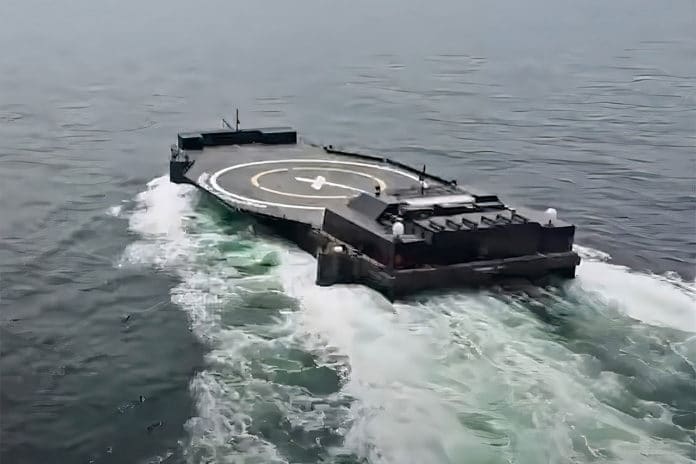SpaceX CEO Elon Musk revealed the new autonomous Spaceport drone ship ‘A Shortfall of Gravitas (ASOG)’ on Twitter with aerial footage of the completed drone ship in the Gulf of Mexico while undergoing its first sea trials.
The new floating platform for rocket landing stands out because it works autonomously, that is, with no tugboat required to take it to the nearby launch site. The platform will be supporting Falcon 9 and Falcon Heavy missions launching from Kennedy Space Center and Cape Canaveral Space Force Station in Florida. SpaceX’s current flagship rocket is being used regularly to send new Starlink broadband satellites into space, in addition to the eventual transport of cargoes and NASA astronauts to the International Space Station.
The ASOG, as reported by Musk, will replace the role of the long-running drone ship, “Of Course I Still Love You,” which entered operational service for Falcon 9 Flight 19 in late June 2015. This was recently transported to the Port of Long Beach to begin supporting launches on the west coast. Finally, it is worth noting that SpaceX intends to accelerate the launches of its Starlink satellites in California, requiring more drone ship support to catch the reusable stages of its rockets.
For high-energy launches like Falcon Heavy and GovSat-1, the drone ship has to travel several hundred miles East of Florida. The round trip journey is at a bare minimum of 6-7 days, usually more. Once in port after a recovery, SpaceX typically needs a solid 24-72 hours to remove the landed rocket booster from the ships. This means that the drone ships may not be immediately available for the next launch, and a third ship is needed. Now, with three drone ships, SpaceX can launch more spacecraft to its desire.
